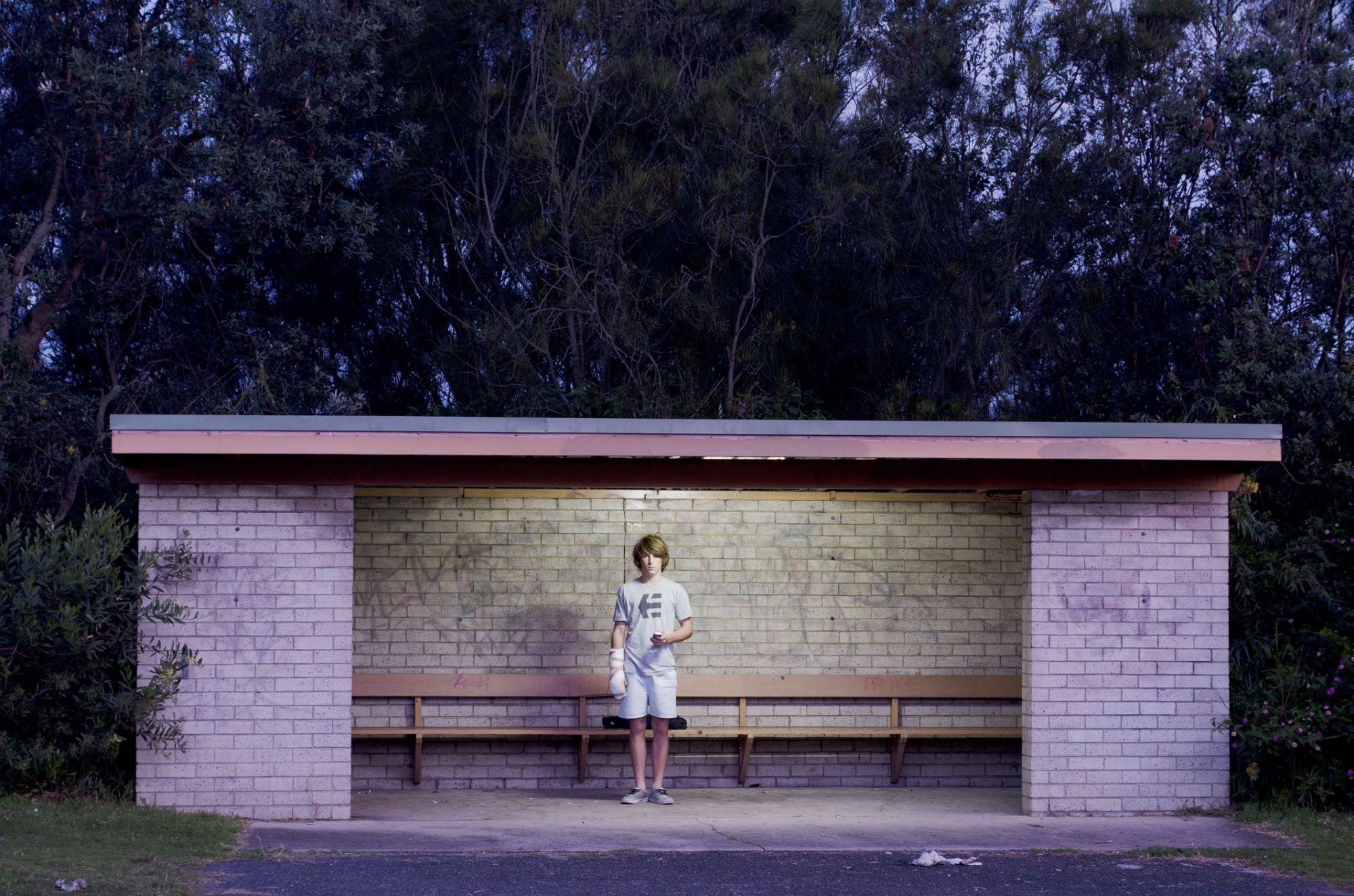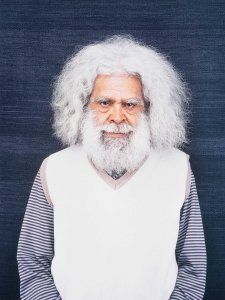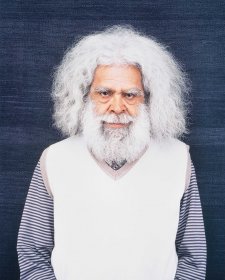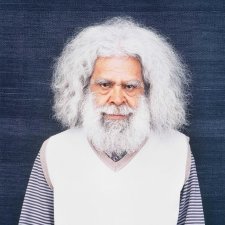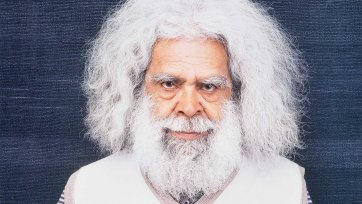My son, Liam McGeachie, was going through some of the rites of passage from the comfort of childhood through adolescence towards being an adult. Some of the issues are symbolised by this image. Through it all, of course, the main necessity is always the latest mobile phone.
Questions
1. McGeachie identifies the subject of his portrait as his son, Liam. Does the relationship between the photographer and subject influence your reading of the image? How?
2. The figure of Liam inhabits only a small area within the frame. Why do you think the photographer chose to compose the portrait this way?
3. The title of the portrait refers to the location, 'at the bus stop'. Create an alternative title for the portrait that reflects the ideas and themes identified by the photographer.
The photographer and the portrait -
an interview
How do you define your own practice?
Photographer
Was the photograph a result of a constructed or candid encounter?
I have been taking photos of my son all his life. Almost all have been 'constructed' in one way or another - even if they were the typical things that kids did growing up - as this was the simplest way to create an image that I liked. I did take the odd birthday photo that was candid.
What are the ideas or themes underpinning your portrait?
My son had been going through the usual things for many 17 year olds - leaving school, beginning an apprenticeship, getting his license and a car and there is some reflection of this in the image. His arm is bandaged due to an accident at work, he is in a bus stop as he used to use buses all the time before getting his car, he is near the beach where he lives. He also lives his entire life on the phone.
Describe the technical aspects of your photograph?
The image was taken with a Nikon D7000. I like the play of different light sources within an image, or of shooting to an 'incorrect' light source. Sometimes that may involve using my own artificial light, however, in this case I have used the light source of the bus stop as the 'main' light. The lighting ratio was achieved by shooting at a time when the ambient light matched the light from the bus stop i.e. I chose the time to shoot that suited what I wanted. The only processing was to adjust the file slightly so that the print matched my original perception of the scene.
How was the final print made? Is this print one of an edition?
I had originally intended to print this on a gloss paper, however, I preferred the texture of the darker elements on matte and so used that instead. It is a one off.
Describe your consideration of scale, mounting and framing in the presentation of your portrait?
I have printed it to just smaller than A3 as I felt that that size suited the image. It is mounted simply with a white acid free board and I have chosen a wooden frame that I think will hold the image in and complement it, without overwhelming the image.
Who would you nominate as your influences?
I do not know if anyone in particular has influenced me, however, I have liked the work of Irving Penn, Robert Frank, Sebastiao Salgado and Ernst Haas, among many others, as I felt that they were all original, creative and had a consistently high quality of work - especially the printed output.
Do you have any advice for a beginning photographer (eg. students)?
Take lots of photos, look at them, think about them and enjoy what you do.
